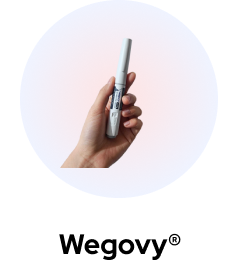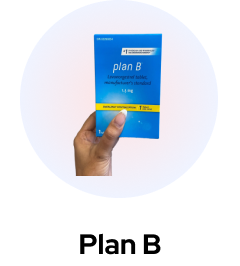Dysmenorrhea is pain in the pelvic area or abdomen that’s related to menses. It can start during late teens to early 20s. The risk lowers as the individual ages.
The doctor will first do a physical test checking if all the reproductive organs are fine and there is no physical issue that is causing the menstrual pain. Doctors can also order various tests to see if there are any issues that need to be addressed. For instance an ultrasound can be used to get a good image of the ovaries, cervix, uterus and fallopian tubes to analyse. If a more detailed image is required, the doctor can also request a MRI or CT scan be done. Laparoscopy is a test where the doctor makes small cuts in the tissue to use a camera and observe certain reproductive organs. This will allow the doctor to clearly see what is the issue. Usually for menstrual cramps, something this invasive is not necessary.
In terms of risk factors, these include: individuals who have menarche early on, as in less than 12 years of age; people who have an increased amount of menstrual flow and duration; people with menstruation that is irregular; smoking; low BMI; family history of dysmenorrhea; and people who have never given birth. Goals of therapy can be to decrease or eliminate the menstrual pain that is causing the discomfort; identify the specific underlying cause, and treat them. If a specific cause is identified, it’s called secondary dysmenorrhea.
There are several signs and symptoms that can be noted with dysmenorrhea. If the dysmenorrhea is primary, it will show symptoms of pain within several hours before bleeding and this interval will be present till a couple hours into menses as well. The duration of this is maximum a few days. In terms of symptoms, it can cause cramps specifically in the lower mid abdomen and the pelvis. In this state prostaglandins may be in excess and cause symptoms such as vomiting, backache, diarrhea, nausea, pain in the thighs, dizziness, and headaches.
Primary vs secondary
Primary means there is no observed cause to the dysmenorrhea. No cause can be identified. Usually it will occur in ovulatory cycles. It’s more severe the younger you are, and in those that have never given birth. The usual occurrence is within 2 years of menarche, and it’s common in smokers.
Secondary dysmenorrhea means there is a specific cause, and it can be identified. These potential causes include endometriosis, pelvic inflammatory disease, congenital malformations, adenomyosis, and several more causes not listed here.
Treatment:
There are several non-drug measures that can be used. For instance one can use heat therapy with heating pads. Exercise may provide relief. Menstrual pain may decrease with yoga. TENS (transcutaneous electrical nerve stimulation) has also shown some effectiveness. Quitting or reducing smoking will help, as smoking is a risk factor that increases pain. Surgery is always an option.
In terms of drug measures, there are many different types of medications that can be used. In primary dysmenorrhea, NSAIDs are the treatment of choice since they act on prostaglandins and prostaglandins, which usually the culprit. NSAIDs are usually effective for 80% of cases.
Ibuprofen and naproxen are available without prescription. They should be started immediately after menses starts, and taken for 2-3 days with food. NSAIDs do increase the risk of getting a cardiovascular event (stroke or MI) but this is very rare in young individuals. Acetaminophen is not as effective as NSAIDs and should only be used if NSAIDs are not available.
Combined hormonal contraceptives are also an option. These have various different routes such as vaginal, oral, or transdermal. The mechanism they work by is limiting endometrial growth, inhibiting ovulation, decreasing menstrual blood flow, and suppressing prostaglandin production at menses. If the individual wants contraception, then this option will provide effective for both needs.
The patches are not as effective as the oral treatment for menses pain relief. Extended cycle versions or the ones that are taken continuously are preferred, since they decrease the occurrence of pain as well as menstrual periods. Continuous forms of the ring or patch are an alternative to oral treatment.
In terms of progestin-only contraceptives, there is an intrauterine system that releases a low dose of levonorgestrel into the uterine cavity. This may not stop ovulation in some, but it deactivates the endometrium so the menstrual blood flow is decreased. This is a good treatment for those who have a lot of bleeding during menstruation. Depot medroxyprogesterone is also a good option. This stops menses from occurring, stopping ovulation and starting to degrade the endometrial lining. It’s given as an intramuscular injection. For individuals over 35 that smoke or those that can’t tolerate estrogen, this is a good option to use as an alternative.
Some herbal options are: ginger, fenugreek, zink, fish oil, vitamin B1, and many others. These do, however, have a low quality of evidence compared to other drug options
PMS
Premenstrual syndrome is when there are physical and/or behavioral symptoms that happen during the luteal phase of the menstrual cycle, and keeps recurring monthly in a cyclic fashion. The exact cause is still not known, but it’s possible it could be because of increased sensitivity to sex hormones, or neurotransmitters not functioning properly.
There are many risk factors for PMS such as: depression, a high BMI, emotional or physical trauma (domestic violence), and substance abuse. Certain nutrients such as vitamin D, magnesium, calcium manganese , vitamin B6, linoleic acid, or vitamin E can have an effect if they are deficient in the body. There may also be a genetic component, as twins have a high prevalence of it.
Before an individual is diagnosed with PMS, many other diagnosis need to be ruled out. For instance: diabetes, fatigue, anemia, thyroid disorder, polycystic ovaries, endometriosis and possible side effects of contraceptives. Some general criterias that are necessary for diagnoses are: the symptoms the patient is experiencing should happen during the luteal phase; symptoms should affect daily functioning; and the peak of symptoms should be before menstruation occurs and shouldn’t be apparent in the follicular phase.
The usual onset is in the mid-20s. Many start looking for treatment options in their 30s. Some behavioural symptoms to watch out for are: aggression, irritability, anger, lethargy, anxiety, mood lability, depression, panic attacks, fatigue, poor concentration, forgetfulness, reduced coping skills and hostility. Some physical symptoms to watch out for are: acne, headache, appetite change, hot flashes, bloating, fluid retention, oliguria, muscle aches, breast pain or swelling, nausea and vomiting, constipation, pelvic heaviness or pressure, dizziness or vertigo, weight gain, and fatigue.
Treatment
In terms of treatment that doesn’t involve medication, there are many options. For instance: relaxation and reducing stress can help a lot. Some methods that can be used are: massage, acupuncture, and light therapy. Your diet can also be modified to target some of the symptoms; for instance, breast symptoms can be improved if caffeine is restricted, along with foods that have methylxanthine in it. Carbohydrates will be related to issues about appetite, as well as behavioural symptoms. Decreasing the amount of salt in a diet has good outcomes with bloating, fluid retention, weight gain, breast tenderness and swelling.
In terms of drug measures, NSAIDs are the medication preferred, such as advil and naproxen. They treat the pain related to the breast symptoms as well as muscle aches. Vitamin B6 can be used to treat PMS as well. Calcium carbonate may help with water retention, food cravings and pain. Magnesium can help with fluid retention. Combined oral contraceptives don’t show consistent results for PMS, but can be recommended if the patient needs contraception too. SSRIs are also options to use for psychological symptoms, and can be used during the luteal phase only, or continuously throughout the menstrual cycle. Spironolactone is also a good option for breast tenderness or fluid retention.
There are some natural health products that are available. Chasteberry has shown benefit in breast discomfort. Aromatherapy has shown benefit in anxiety, nervousness, bloating and depression.
Oil of evening primrose isn’t any better than a placebo. St. John’s wort doesn’t have good studies to support its use. Ginkgo biloba has shown benefits in symptoms (both physical and psychological), but there isn’t enough evidence to support a recommendation.












 (US)
(US)